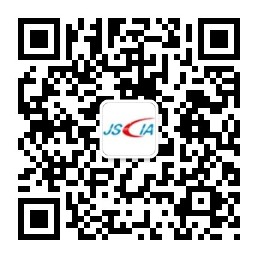欧盟时间6月22日下午3:40(北京时间晚9:40),欧洲议会以450票赞成、115票反对、55票弃权通过了关于建立世界上第一个碳边界调整机制!通过激励非欧盟国家减少排放并防止碳泄漏风险来减少全球碳排放。纳税范围扩大、起征时间延期!
该法案特点如下:
一、覆盖面扩大:扩大CBAM的范围
除了委员会提出的产品(钢铁,炼油厂,水泥,有机基础化学品和化肥)外,议会还希望CBAM也涵盖有机化学品,塑料,氢气和氨。为确保顺利实施,有机化学品和聚合物应接受委员会对其技术特性的评估。
二、包括间接排放
欧洲议会议员还希望将CBAM扩展到包括间接排放,即来自制造商使用的电力的排放,以更好地反映欧洲工业的二氧化碳成本。
三、逐步实施CBAM并结束ETS的免费津贴
CBAM将从2023年1月1日起适用,过渡期至2026年底,议会认为必须将其全面实施,用于上述欧盟Emiss部门到2032年,离子交易系统(ETS) - 比委员会提出的早三年。到2032年,出口商应获得免费配额 - 2023-2026年期间为100%,2027年为93%,2028年为84%,2029年为69%,2030年为50%,2031年为25%。
为了避免双重保护,在ETS中给予欧盟行业的任何免费津贴,以解决在没有公平竞争的情况下碳泄漏的风险,应该在2032年之前完全淘汰,届时CBAM将完全启动受保护行业。
此外,议会要求,最有效的欧盟设施应具有出口调整机制,以便在欧盟排放交易体系中获得与CBAM监管的产品出口相关的排放的免费配额,这些排放没有类似于欧盟排放交易体系的碳定价机制。到2025年12月31日,欧盟委员会应提交一份报告,详细评估欧盟排放交易体系和CBAM对欧盟CBAM涵盖的产品的欧盟生产以及出口减损的WTO兼容性的影响。
议会强调,CBAM和欧盟排放交易体系之间的一致性对于尊重世界贸易组织的原则至关重要,并且CBAM绝不能被滥用为加强保护主义的工具。
四、卖碳证增加收入
议会希望出售CBAM证书产生的收入用于欧盟预算。欧洲议会议员补充说,欧盟必须提供财政支持,至少相当于销售CBAM证书产生的收入,以支持最不发达国家的制造业脱碳努力。这种支持将有助于实现欧盟的气候目标和国际承诺,如《巴黎协定》。
背景
CBAM是“2030年适合55个一揽子计划”的一部分,这是欧盟计划到2030年将温室气体排放量与1990年的水平相比减少至少55%,符合欧洲气候法。
目前,全球燃料燃烧产生的二氧化碳排放量中约有27%来自国际贸易商品,虽然欧盟已大幅减少其国内温室气体排放量,但来自对欧盟的进口的二氧化碳排放量一直在不断增加,从而破坏了欧盟减少其全球温室气体足迹的努力。
原文报道如下。
CBAM: Parliament pushes for higher ambition in new carbon leakage instrument
22-06-2022, Press Releases PLENARY SESSION
Phasing in CBAM from 2027 and ending free allowances in EU ETS by 2032
Scope should be extended to include organic chemicals, plastics, hydrogen and ammonia as well as indirect emissions
EU budget should support least developed countries through amounts equivalent to sums collected through CBAM
Need for a centralised EU CBAM authority
MEPs call for a broader scope and faster implementation of the EU Carbon Border Adjustment Mechanism (CBAM) to raise global climate ambition.
On Wednesday, the European Parliament adopted its position on the regulation establishing the world’s first Carbon Border Adjustment Mechanism with 450 votes for, 115 against and 55 abstentions. A Plenary debate was held on CBAM on 7 June.
Parliament agrees on the need for a CBAM to reduce global carbon emissions by incentivising non-EU countries to reduce their emissions and to prevent the risk of carbon leakage, i.e. production being moved to outside the EU to countries with laxer climate policies. However, MEPs propose a number of changes to increase climate ambition.
Broadening the scope of CBAM
In addition to the products proposed by the Commission (iron and steel, refineries, cement, organic basic chemicals and fertilisers), Parliament wants CBAM to also cover organic chemicals, plastics, hydrogen and ammonia. To ensure a smooth implementation, organic chemicals and polymers shall be subject to a Commission assessment of their technical specificities. MEPs also want to extend CBAM to include indirect emissions, i.e. emissions deriving from the electricity used by manufacturers, to better reflect CO2 costs for European industry.
Phasing in CBAM and ending free allowances in ETS
The CBAM would apply from 1 January 2023 with a transitional period until the end of 2026 and Parliament believes it must be fully implemented for the above listed sectors of the EU Emissions Trading System (ETS) by 2032 - three years earlier than proposed by the Commission. Until 2032, exporters should receive free allocations - 100% in the period 2023-2026, 93% in 2027, 84% in 2028, 69% in 2029, 50% in 2030 and 25% in 2031.
To avoid double protection, any free allowances granted to EU industries in the ETS, to address the risk of carbon leakage in the absence of fair competition, should be fully phased out by 2032 when CBAM kicks in fully for the protected industries.
In addition, Parliament requests that the most efficient EU installations should have an export adjustment mechanism to receive free allocations in the EU ETS for the emissions linked to their export of products regulated by CBAM to non-EU countries without carbon pricing mechanisms similar to the EU ETS. By 31 December 2025, the Commission shall present a report with a detailed assessment of the effects of the EU ETS and CBAM on the EU production of products covered by CBAM and exported outside the EU, on the development of global emissions and on the WTO-compatibility of the export derogation.
Parliament stresses that coherence between the CBAM and the EU ETS is essential to respect the principles of the World Trade Organisation and that CBAM must not be misused as a tool to enhance protectionism.
Need for a centralised EU CBAM authority
Rather than having 27 competent authorities, Parliament believes there should be one centralised EU CBAM authority, which would be more efficient, transparent and cost effective. This would also help to combat forum shopping from importers.
Revenues
Parliament wants the revenues generated by the sale of CBAM certificates to go to the EU budget. MEPs add that the EU must provide financial support, at least equivalent in financial value to the revenues generated by the sale of CBAM certificates, to support least developed countries' efforts to decarbonise their manufacturing industries. This support would help meet the EU’s climate objectives and international commitments, such the Paris Agreement.
Quote
After the vote, rapporteur Mohammed Chahim (S&D, NL), said: “Today is an historic day for EU climate legislation. Thanks to CBAM, the EU will finally have a tool to incentivise our global trading partners to decarbonise their manufacturing industries, as no matter where you pollute, you will now have to pay for it, if you want to export to the European market. CBAM will therefore significantly contribute to meeting EU and global climate targets.”
Next steps
Parliament is now ready to start negotiations with member states.
Background
CBAM is part of the “Fit for 55 in 2030 package", which is the EU’s plan to reduce greenhouse gas emissions by at least 55% by 2030 compared to 1990 levels in line with the European Climate Law.
Around 27% of global CO2 emissions from fuel combustion currently comes from internationally traded goods and, while the EU has substantially reduced its domestic GHG emissions, those coming from imports to the EU have been constantly increasing, thereby undermining the EU’s efforts to reduce its global GHG footprint.
(一)碳边境调节的背景和概念
1. 碳边境调节所处的背景是《巴黎协定》下各国碳中和目标及减排力度存在差异;
2. 实施碳定价机制的国家/地区为保护本地企业竞争力以及避免碳泄露,对来自措施较弱国家的产品施加的、与碳排放相关的边境调节措施;
3. 碳边境调节是一种贸易关税措施,将碳排放的成本内部化到进口产品的价格;
4. 欧盟碳边境价格机制是“Fit for 55”一揽子减排政策的重要部分,其提出与《欧盟绿色新政》、欧盟碳市场(EU ETS)的改革有关。
(二)欧盟委员会所提欧盟碳边境调节机制建议的关键设计要素
1. 碳边境调节机制的调节价格的确定
调节价格=进口产品的内涵碳排放x进出口国的碳价格差
2. 欧盟碳边境调节机制体现“名义碳市场”
欧盟碳边境调节机制是针对进口产品的单独体系(名义碳市场),欧盟考虑了EU CBAM与EU ETS现有设计的衔接和对其可能的冲击。被欧盟成员国主管机构认可的申报人需要在每年5月底前向主管机构提交CBAM申报单、CBAM证书以及内涵碳排放、已支付的碳价等信息。
3. 欧盟碳边境调节机制的实施阶段划分
第一阶段是过渡期,时间为2023-2025。针对水泥、电力、化肥、钢铁、铝的原材料及相关制成品。申报人只进行信息报告、不涉及资金义务。每个季度,申报人向欧盟成员国主管部门提交一个CBAM报告,涵盖产品信息、碳排放、已支付的碳价等内容。欧盟委员会对信息进行评估,提出是否扩大行业和产品范围的建议。第二阶段是正式期,时间为2026年后。由欧盟委员会评估第二阶段是否纳入间接排放,甚至价值链排放。
4. 确定进口产品内涵碳排放的方法
进口产品内涵排放量,既可以通过实际测算,也可以采用缺省值法。针对实际测算的方法,需要提交经过核查的数据。核查机构由成员国机构认可,按照相应的技术规范进行核查,并出具核查报告。缺省值法主要有两种,一种是采用国家区域平均值,另一种是采用欧盟最差10%设施平均值。
5. 对于境内外碳价的认可
碳边境调节机制在确定碳价格差时,对于绝大多数通过公开拍卖的欧盟碳价,采取每周计算的方式并且考虑配额免费分配占比的情况。对于境外碳价,如果是针对境外碳税,则考虑出口退税问题,情况相对简单;如果是针对境外碳市场,其碳价的确定则相对复杂。
(三)欧盟碳边境调节机制对我国的可能影响
1. 我国是欧盟第一大贸易伙伴和最大商品进口来源国、欧盟进口商品隐含碳排放的最大来源国;
2. 我国出口欧盟的中间产品中80%的碳排放来自金属、化学品和非金属矿物,属于欧盟碳市场高泄露风险部门,一旦纳入碳边境调节会对出口产生巨大影响;
3. 围绕EU CBAM的影响已有开展了很多研究工作。在数据和假设不同的情况下(如进口产品的排放范围、相关产品的碳排放强度和碳价),结论会有较大差异。总体认为,中国对欧出口总额的5%~7%会受到影响,CBAM部门对欧出口下降11%~13%;对欧出口成本增加约1~3亿美元/年,占CBAM覆盖产品对欧出口额的1.6%~4.8%。
(四)我国的应对措施
1. 建议我国与欧洲在政治和技术层面加强对话;
2. 建议国内在政策和技术方面做好EU CBAM实施的相关准备。
二、问答选编
问题1:中国碳市场跟国际碳市场接轨的可能性及可能的路径?
回答:碳市场接轨问题在学术研究层面可以有各种假设情景,但是从实际实施角度难度较大。认为2030年前我国不大可能与欧盟碳市场完全衔接,最主要的任务依旧是发展国内碳市场。
澳大利亚曾与欧盟进行碳市场连接的谈判。目前与欧盟碳市场接轨的国家只有挪威、瑞士等,但是情况很特殊。挪威、瑞士的市场小,欧盟碳市场的规则直接适用。中国碳市场规模较大,与同样较大规模的欧盟碳市场接轨,涉及管治权等十分复杂问题。针对个别行业的受限制连接或许是开始阶段的一个可能方案。
问题2:EU CBAM证书成本最终由谁承担?对其他国家进口商产生影响是否影响到贸易结构?
回答:EU CBAM证书成本承担情况与贸易买卖双方市场有关,不好一概而论。有研究指出,对欧出口额受EU CBAM影响最大的国家是乌克兰和俄罗斯,我国排在第四或五位。贸易结构主要与商业行为有关,产品竞争力取决于生产成本与碳价格差额等方面。
问题3:EU CBAM是否考虑了各种标准的抵消机制,如VCS、CCER?
回答:EU CBAM没有考虑上述的抵消机制。EU CBAM作为“名义碳市场”,企业按照内涵碳排放量从政府主管机关购买CBAM证书,CBAM证书价格与欧盟配额价格、配额免费分配比例有关。从间接影响上看,采用抵消机制会引起碳价格下降,但对CBAM证书价格影响较小。
问题4:EU CBAM适用原材料及制成品,是否包括汽车等?
回答:目前EU CBAM仅包括相对基础的原材料制成品,对于汽车这类更集成的产品,EU CBAM暂不包括这类范畴。
问题5:欧盟通过CBAM证书获得的资金,用途有哪些?
回答:目前欧盟还没有提及CBAM的资金用途。很大可能性与欧洲碳市场用途类似,例如鼓励和支持低碳技术、对受到较大影响的欧盟成员进行补偿等。
问题6:中国企业的产品如果在国内已经达到了碳中和,要不要承担EU CBAM成本?
回答:欧盟是否认可中国企业产品达到了“碳中和”,取决于欧盟选取什么样的方式和指标等来判断,与采取哪些标准有关。
问题7:EU CBAM适用范畴是否会扩大?
回答:目前EU CBAM适用于水泥、电力、化肥、钢铁、铝这5个行业。欧盟委员会、欧洲理事会、欧洲议会围绕EU CBAM机制仍在沟通。欧盟委员会作为执行主体,需要考虑到EU CBAM机制的实际可操作性。
问题8:钢铁工业有长流程和短流程之分,EU CBAM是否考虑了工艺流程的影响?
&A回答:EU CBAM不考虑工艺流程,只考虑纳入产品的碳排放水平,也有可能影响企业在技术路线和工艺流程上的选取。
问题9:欧盟CBAM是否与《巴黎协定》第6条全球碳市场有关?
回答:目前没有直接关联,间接关联可能涉及碳市场的接轨,《巴黎协定》第6条为全球碳市场提供了一些规则基础。
中华人民共和国国家发展和改革委员会 中华人民共和国工业和信息化部 中华人民共和国应急管理部 中华人民共和国生态环境部 中华人民共和国科学技术部 中华人民共和国财政部 中华人民共和国商务部 中国石油和化学工业联合会
江苏省发展和改革委员会 江苏省工业和信息化厅 江苏省财政厅 江苏省生态环境厅 江苏省科学技术厅 江苏省商务厅 江苏省应急管理厅 江苏省市场监督管理局 江苏省统计局
北京市化学工业协会 天津市石油和化工协会 辽宁省石油和化学工业协会 内蒙古石油和化学工业协会 重庆市石油与天然气学会 河北省石油和化学工业协会 山西省化学工业协会 吉林省能源协会 黑龙江省石化行业协会 浙江省石油和化学工业行业协会 安徽省石油和化学工业协会 福建省石油和化学工业协会 江西省石油和化学工业协会 河南省石油和化学工业协会 湖北省石化行业协会 湖南省石油化学工业协会 广东省石油和化学工业协会 海南省石油和化学工业行业协会 四川省化工行业协会 贵州省化学工业协会 云南省化工行业协会 陕西省经济联合会 甘肃省石化工业协会 青海省化工协会
电话:协会:025-8799064 学会:025-86799482
会员服务部:025-86918841
信息部:025-86910067
传真:025-83755381
邮箱:jshghyxh@163.com
邮编:210019
地址:南京市梦都大街50号东楼(省科技工作者活动中心)5楼
增值电信业务经营许可证:苏B2-20110130
备案号:苏ICP备13033418号-1

